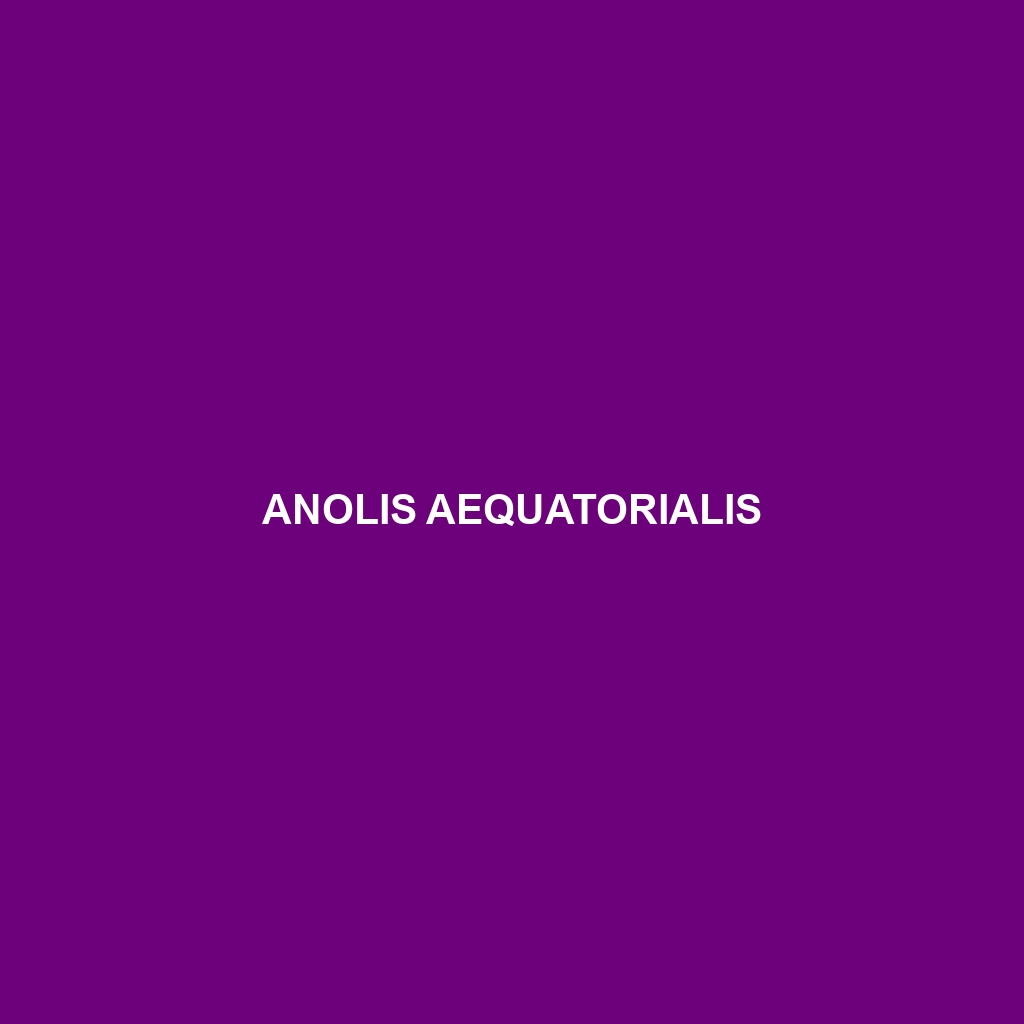Anolis aequatorialis: Species Description
Common Name: Anolis aequatorialis
Scientific Name: Anolis aequatorialis
Habitat
Anolis aequatorialis is primarily found in the tropical forests of Ecuador and parts of Colombia. This species thrives in a variety of environments, including humid lowland forests and montane regions. Its preferred habitats often include the understory and lower canopy layers, where vegetation is dense, providing ample coverage and protection.
Physical Characteristics
The Anolis aequatorialis typically measures between 6 to 8 centimeters in length. This lizard exhibits a range of colors, usually displaying vibrant greens and browns, which assist in camouflage among the foliage. Notable features include a well-developed dewlap, which the males use for territorial displays. Their elongated bodies and prehensile tails allow them to navigate effortlessly through branches and foliage.
Behavior
Anolis aequatorialis is known for its territorial behavior, particularly observable in males during the breeding season. These lizards are primarily diurnal, engaging in basking and social displays throughout the day. Their ability to change color intensity, largely attributed to environmental factors, is an intriguing behavioral aspect that researchers have studied extensively.
Diet
The diet of Anolis aequatorialis mainly consists of insects and other small invertebrates. They are opportunistic feeders, with a preference for ants, beetles, and small crickets. Due to their active foraging habits, they contribute to controlling insect populations within their ecosystem.
Reproduction
Reproductive activity in Anolis aequatorialis occurs during the wet season, typically from March to August. Males engage in elaborate courtship displays to attract females, which involve push-ups and dewlap extensions. After mating, females lay one to two eggs in secluded locations, and the young hatch approximately two months later, immediately becoming independent.
Conservation Status
Currently, Anolis aequatorialis is classified as ‘Vulnerable’ according to the IUCN Red List. Habitat loss due to deforestation and climate change poses significant threats to their populations. Conservation efforts are crucial to safeguard their natural habitats and ensure the survival of this unique species.
Interesting Facts
Anolis aequatorialis is notable for its remarkable adaptability to varying environments. Studies have shown that individuals can exhibit distinct color patterns based on their specific habitat. Additionally, this species exhibits a high degree of divergence in behavior and morphology, making it a point of interest for evolutionary studies.
Role in Ecosystem
Anolis aequatorialis plays a critical role in its ecosystem by acting as both predator and prey. By regulating insect populations, they help maintain ecological balance. Moreover, they serve as a food source for various birds and larger reptiles, highlighting their importance in the food web.
